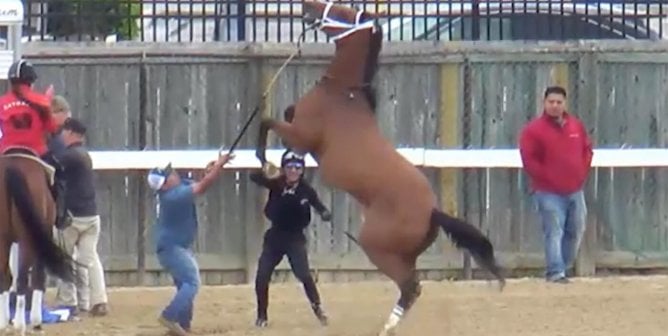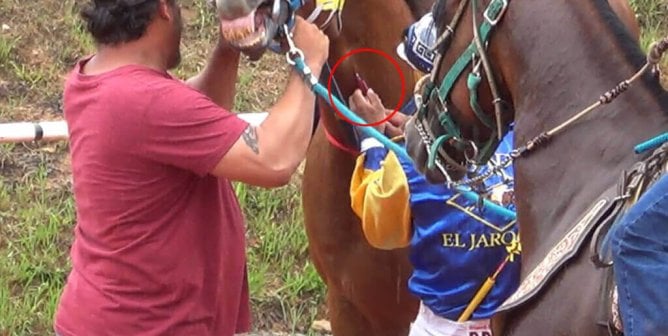Drug Use
Experts agree that the widespread use of non-therapeutic drugs—both legal and illegal—is one of the leading causes of injuries and fatal breakdowns on racetracks. Performance-enhancing drugs often mask pain, allowing horses to race and train with injuries that would otherwise be too painful to run on.
In 2013, PETA investigated the stables of leading trainer Steve Asmussen and discovered that nearly every horse was given an array of drugs and “treatments,” including the following:
- Thyroxine—a prescription drug that is used to treat hypothyroidism and conveniently speeds up metabolism—was administered to most, if not all, of the horses, apparently without any evidence of a thyroid condition.
- Lasix—a diuretic intended only to prevent pulmonary bleeding during extreme exercise in some horses that also masks the presence of other drugs and enhances performance by causing rapid weight loss—was seemingly given to every horse in the stable. Lasix is banned on race day in most countries, but more than 90 percent of Thoroughbreds in the U.S. are given the drug within hours of racing.
- Horses’ legs were burned with liquid nitrogen (a process called freeze-firing) and other irritating “blistering” chemicals—which causes them excruciating pain—purportedly to stimulate blood flow to their sore legs.
- Horses were givenmuscle relaxants, sedatives, and other potent pharmaceuticals to treat ailments such as ulcers, lameness, and inflammation, even when the animals had no apparent symptoms.
Following PETA’s investigation, the New York State Gaming Commission slapped Asmussen with a $10,000 fine for violations of drug use and proposed sweeping new regulations aimed at preventing trainers and veterinarians from giving horses performance-enhancing drugs.
Although Asmussen was fined, countless other prominent trainers have equally marred records. It was revealed that Bob Baffert, trainer of 2015 Triple Crown winner American Pharoah, gave all of his horses thyroxine after seven horses suddenly died in his stables. The leading trainer in the country, Todd Pletcher, has served multiple suspensions for drug violations. Doug O’Neill, trainer of the 2012 Kentucky Derby and Preakness Stakes winner I’ll Have Another, has more than a dozen violations under his belt. D. Wayne Lukas, trainer of the 2013 Preakness winner, Oxbow, was caught with cocaine and administered drugs to a filly who later broke her leg. Darrel Delahoussaye has used snake venom on horses. And in 2007, Patrick Biancone was suspended for one year for numerous drug violations, including possession of cobra venom.
An estimated one out of every two Thoroughbreds bred for racing will be sent to slaughter—meaning that the carcasses of thousands of horses who were treated with drugs not intended for human consumption are entering the human food chain.
Following PETA’s investigation, the Stronach Group, which owns several prominent race tracks, announced sweeping medication reforms, and the New York State Gaming Commission passed a number of amendments that included strict regulations on anti-inflammatory drugs and a complete ban on an anabolic steroid. However, countless other racetracks and states continue to lag behind in drug regulations.
Had enough? Please take a moment of your time to support urgently needed legislation that would regulate medication use and enforce drug testing in racing.








